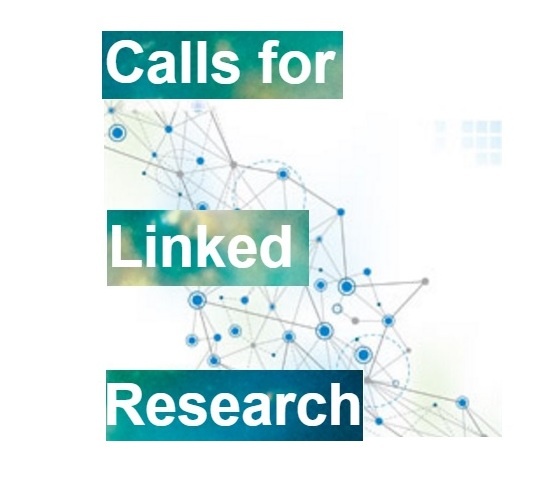Calls for Linked Research : Enabling Decentralised Scholarly Communication
27/01/2017


The Call for Linked Research is for everyone, in any field, who believes in publishing and promoting open, accessible and reusable academic knowledge. Linked Research works towards solutions where researchers can publish and consume research objects, as well as reviews and annotations that are open and both human and machine-friendly. If you support Open Access or Open Science, you're already half way there...
_____________________________________________________________________________________________________
If your research or development touches any part of the scholarly communication or knowledge dissemination process (or you want to start), check out the Call for Enabling Linked Research to see what you can do to improve the state of things for others.
If you answer either of these calls, you won't be publishing into a void. Many people are interested in providing transparent and open reviews for your work.
LINKED RESEARCH
Linked Research is set out to socially and technically enable researchers to take full control, ownership, and responsibility of their knowledge, and have their contributions accessible to society at maximum capacity.
There is no central authority to judge the value of your contributions. You do not need permission to publish. Control your own research and communication. The Web already enables you to be the publisher; it is completely possible today and there are ongoing initiatives and tooling to make it so.
Linked Research’s core goals:
- Publishing and ownership of documents and data
- Discovery and reuse of knowledge and data
- User experience and tooling
If you are an academic researcher, reconsider and question the tooling or rules that you are asked to follow e.g:
- Academic paywalls
- Information silos such as third-party publishers
- Strictly desktop or “paper user interfaces” e.g., (La)TeX, PDF/Word
- Blind reviews
Linked Research works towards solutions where researchers can publish and consume research objects, as well as reviews and annotations that are open and both human and machine-friendly.
HOW TO LINKED RESEARCH
- Access: Publish your work under a webspace that you control and trust e.g., your personal website, at your institution's webspace given to you, or library, or even at your company.
- Linked Open Data: Make sure your articles and annotations are human and machine-readable, interlinked with other information out there.
- User Experience: Take your articles further and enrich with user interactions to better communicate your ideas.
- Open communication: Announce your ideas and invite your community to give feedback. Give constructive feedback to others, publicly.
# Example: Piecing the puzzle. Self-publishing queryable research data on the Web (an HTML+RDFa article submitted according to the Linked Research principles to LDOW2017 by Ruben Verborgh). The article is currently under review.
If you are publishing in accordance with Linked Research, add yourself to this list of examples.
SCHOLARLY COMMUNICATION
|
|
The scholarly communication process begins with conducting research and authoring reports, often collaboratively, including sourcing and citing related work, and reusing others’ data. |
|
|
Submitting reports for formal assessment by conference venues and journals permits verification and review of contributions, and allows a researcher to raise their profile and cement their expertise in the field. |
|
|
The review process allows academics to share their knowledge and remain abreast of work-in-progress and the current state of the art. |
|
|
Publications provide stable snapshots of projects and enable the aggregation of related work. |
|
|
Repositories and libraries provide persistent archives of work and interfaces for searching. |
|
|
Citation impact and altmetrics are used to determine the value of projects and the reputation of participants. |
|
|
Discoverability and reuse can be enhanced through adding machine readable semantics to published work, completing the cycle. |
Linked Research invites contributions around (but not exclusive to) the following areas:
|
Architecture and Decentralisation |
|
|
Interfaces and Interactions
|
|
|
Create, Reuse, Remix, and Share
|
|
CONTRIBUTION AND REVIEW
Enabling Linked Research works best when dogfooded; the most interesting projects are the ones where the authors can demonstrate that they use their tooling or techniques in their own practice.
Decentralisation and data ownership are key, so you will share your contribution by publishing a document at a domain you control (or have authority over), and sending us the URL. Contributions should be in a format which best conveys your message, and there are none of the constraints associated with paper or print. Write for the Web; accessible, social and interactive articles are encouraged.
PRESENTING YOUR WORK
The Call for Enabling Linked Research is an ongoing and online effort.
However, watch the EVENTS list for upcoming opportunities to present your work in person.
The next are:
- Enabling Decentralised Scholarly Communication at WWW2017
- Enabling Decentralised Scholarly Communication at ESWC 2017
_____________________________________________________________________________________________________
Read more about: Calls for Linked Research
Source: LINKED RESEARCH
